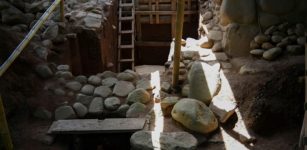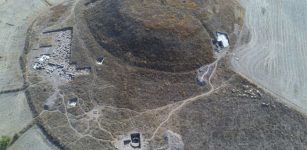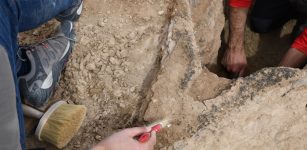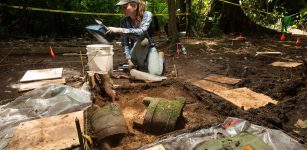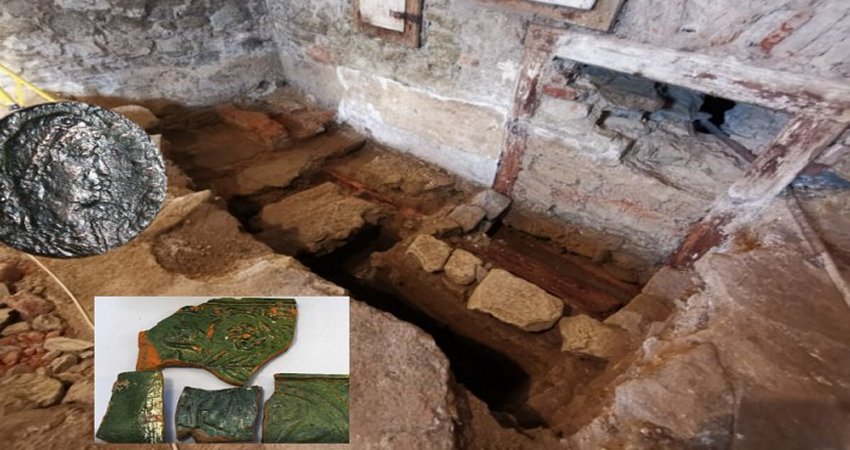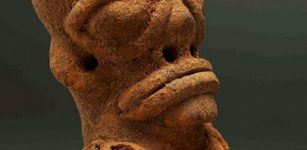Mysterious Stone Table Found At Biblical Temple In Jerusalem – Evidence Of The Ark Of The Covenant?
Jan Bartek – MessageToEagle.com – Archaeologists and Biblical scholars have not given up their attempt to learn the truth about the Ark of the Covenant. Bible’s lost Ark has led to many myths, theories, and claims, but without physical evidence, it’s impossible to determine the fate of this ancient sacred relic.

A replica of the Ark of the Covenant. Credit: Suseno, CC-BY-SA-3.0
Can an unusual stone table found at a Biblical temple in Jerusalem offer more information about what happened to the Ark?
While excavating a 3,100-year-old temple in the ancient settlement of Beth Shemesh, near Jerusalem archaeologists found a peculiar stone table that may be interpreted in several ways. Some scholars think the ancient table is linked to the Ark of the Covenant that contained the tablets of the Ten Commandments received by Moses on Mount Sinai but is there enough evidence to make such a claim?
According to Dr. Zvi Lederman, a Tel Aviv University archaeologist who leads the Beth Shemesh dig, “this would be a rare case in which we can merge the biblical narrative with an archaeological find.”
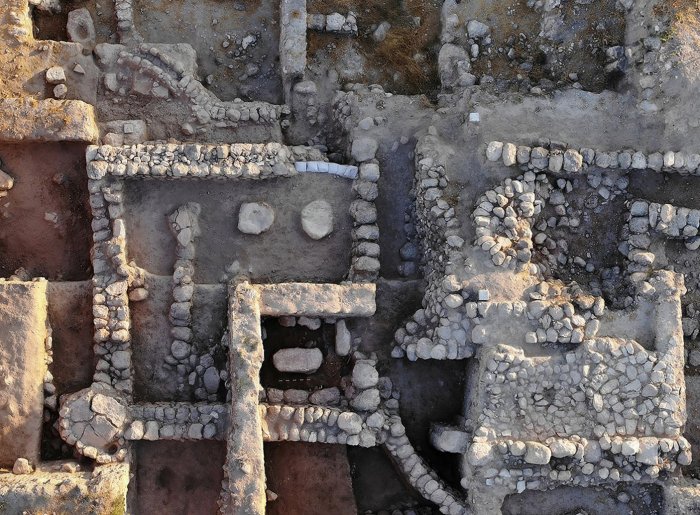
Dr. Zvi Lederman
Scientists are almost certain the unearthed, ancient temple served as a temple. Studies of the building indicate it was deliberately constructed in a way and at a location so it could be used for religious ceremonies. At the site archaeologists also found a treasure trove of decorated pottery jugs and cups, as well as a pile of animal bones that combined, are indications some form of rituals were performed and the building was a temple.
In the Bible, it is told that Beth Shemesh was border town between the Israelites and the Philistines, where the two peoples often clashed. Researchers say there is evidence the ancient temple was destroyed by enemies, most likely the Philistines.
Beth Shemesh is mentioned in the Bible and the site may be the place where the Ark of The Covenant was kept.
“Now the people of Beth Shemesh were reaping their wheat harvest in the valley; and they lifted their eyes and saw the ark, and rejoiced to see it. Then the cart came into the field of Joshua of Beth Shemesh, and stood there; a large stone was there. So they split the wood of the cart and offered the cows as a burnt offering to the Lord. The Levites took down the ark of the Lord and the chest that was with it, in which were the articles of gold, and put them on the large stone.” (1 Samuel 6:13-15).
The latest discovery of the stone table made scientists curious whether the temple was linked to the Biblical ark and some scholars remain skeptical.

Scientists wonder if the biblical ark rested on this stone table. Dr. Zvi Lederman
“The Ark Narrative depicts realities from the 8th century B.C.E. It is difficult to assume that a memory from the 12th century B.C.E. was preserved until the 8th century with no continuous writing tradition,” says Tel Aviv University archaeologist Israel Finkelstein, who has led digs at Shiloh and Kiriath Yearim, two of the other locations that supposedly hosted the ark.
Then, there are scholars who suggest the Ark of the Covenant may have been destroyed by for example Shishak, an Egyptian king who invaded Judah and united Egypt. It’s however unlikely Shishak had anything to do with the Arf of the Covenant because the Bible records the Ark being in Jerusalem many centuries later, and Shishak could not have gain possession of the sacred relic.
Avraham Faust, a professor of archaeology at Bar-Ilan University do not think the discovered stone table can be linked to the legendary Biblical ark.
“I don’t think anyone would take this literally and conclude that this is the stone from the biblical story,” he said.
“Obviously the story was written much later, but this find might support the theory that there are some very early traditions that made their way into the Bible. It’s an automatic and sometimes justified suspicion, but I don’t think this is the case here,” he added.
“This is a noticeable stone, placed in a conspicuous position within what looks like a temple, at sort of the right time, so there are many dots that can connect this find to an old tradition that may have found its way into the biblical story. I don’t know if they are right or wrong, but I think it should be examined carefully.
Some years ago, James Davila, a professor at the University of St. Andrews suggested a translated text, called “Treatise of the Vessels” mentions a number of treasures including the Ark of the Covenant, the Tabernacle, musical instruments made of gold, ornaments from the Garden of Eden and various precious religious stones.
“Seventy-seven tables of gold and their gold was from the walls of the Garden of Eden that was revealed to Solomon, and they radiated like the radiance of the sun and moon, which radiate at the height of the world,” states the text in an exemplary passage.
See also:
Was A Statue Of Asherah Hidden In The Ark Of The Covenant?
Baffling Copper Scroll – A Treasure Map Leading To A Secret Lost Temple?
Those who search for the artifacts from King Solomon’s temple tend to focus on the Middle East where the treasures have been hidden.
According to Davila, the writer of the original text was not trying to convey factual locations of the hidden treasures of Solomon’s Temple, but rather was writing a work of fiction, based on different legends. His work was to be “a piece of entertaining fiction, not any kind of real guide for finding the lost Temple treasures,” he says.
Could the same be said about the newly discovered stone table? Archaeologists and historians remind little is still known about the people who lived in this region. Perhaps looking for the Ark of the Covenant is premature without having a proper historical background about the area.
Pharaoh Merneptah’s Victory Stele is still of great interest to Biblical scholars. Written in hieroglyphs, the text on the stele reads: “Canaan is plundered with every evil way. Ashkelon is conquered and brought away captive, Gezer seized, Yanoam made nonexistent; Israel is wasted, bare of seed.”

Joshua passing the River Jordan with the Ark of the Covenant. Credit: Public Domain
The ancient Egyptian inscription dates to about 1205 B.C. and recounts the military conquests of the pharaoh Merneptah. The Hebrews had conquered the land of Canaan around 1400 B.C. Unfortunately, Merneptah’s stele does not offer information about Beth Shemesh.
See also: More Archaeology News
“We can’t say that in 1150 B.C.E. they were Canaanites and by 1120 B.C.E. they were Israelites. We don’t see any such sharp cultural transition. All the archaeology of Beth Shemesh and of the highlands of Canaan shows that this was a slow process of construction of identity that took centuries,” Professor Shlomo Bunimovitz from the Tel Aviv University said.
“So we cannot call them Israelites, but their identity had already started to evolve, partly as a reaction to Philistine culture, into what we would eventually call the people of Israel.”
It seems archaeologists will have to continue gathering clues to determine the fate of the Ark of the Covenant before the truth about this enigmatic sacred object can be determined. For now, the Ark of the Covenant remains one of many Biblical mysteries scholars cannot explain.
Written by Jan Bartek – MessageToEagle.com – AncientPages.com Staff Writer

